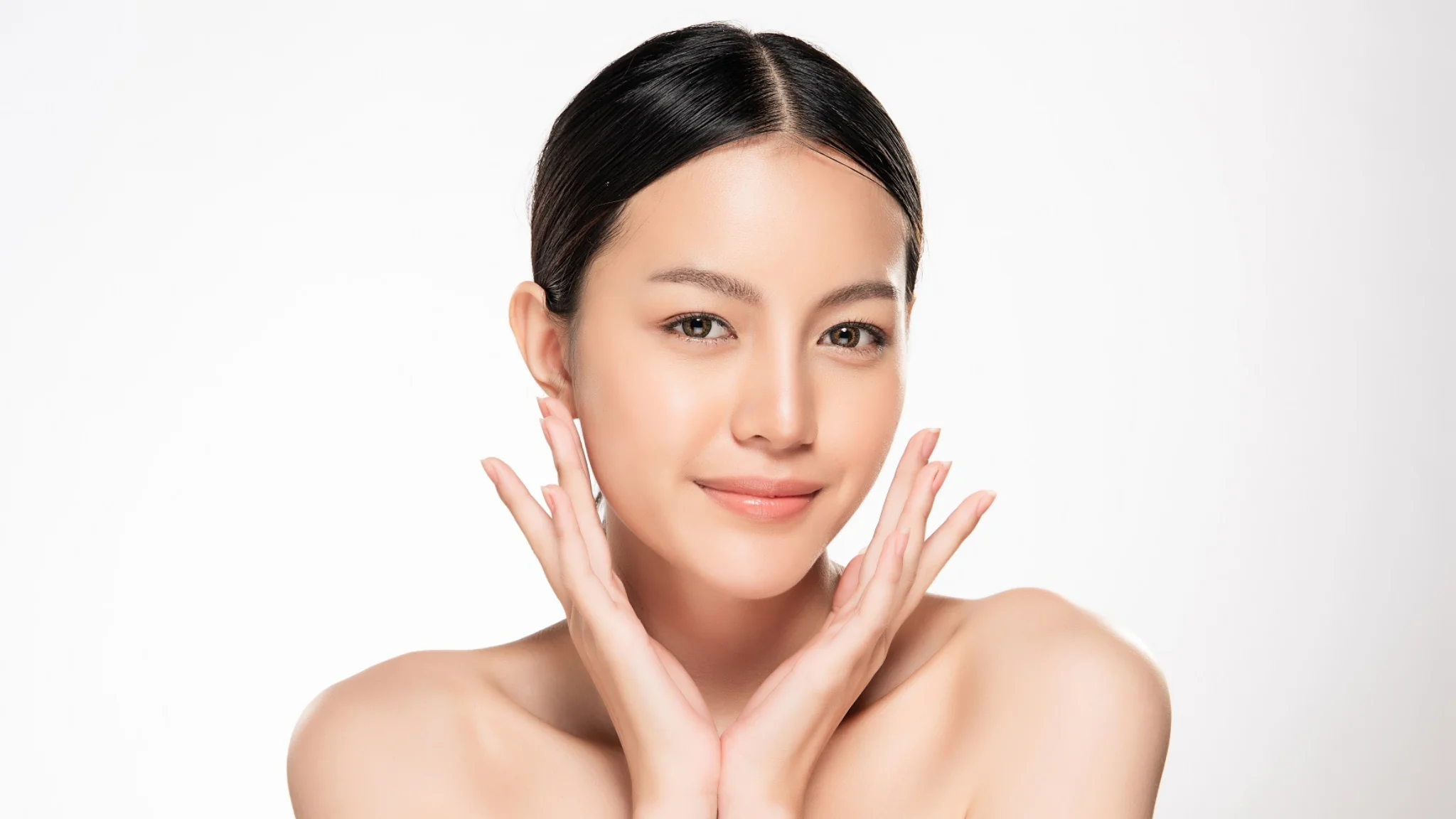The Japanese Skincare vs Korean Skincare systems define beauty contrary. Due to my interest in skincare, it is my pleasure to address what distinguishes them. We will examine their differing approaches, pharmaceuticals, and how they influence your skin. Differences between "K-beauty" and J-beauty underlined, emphasizing their unique products and techniques. Use visual signals such as skincare products, skin types, traditional practices, and cultural symbols to highlight their individual ways to obtaining perfect skin. Include items that signify cleanliness, purity, and natural beauty to portray the efficacy and appeal of both skincare procedures.
Key Takeaways
- Learn about ancient roots and new ways of doing things of "J-beauty" and "K-beauty"
- Find out what "Japanese skincare" is all about and how it works with its focus on water.
- Learn the Korean skincare craze, including "fermented products" and the famous 10-step method.
- Determine which beauty program - Japanese or Korean - might be the most powerful for your unique skin type and issues.
- Gain insights into the latest advancements and trends in Asian beauty, from "natural ingredients" to cutting-edge formulas.
Recommended to read: Evening Skincare Routine With Tretinoin
Why Are Korean and Japanese Skincare So Good

Before we dive into the distinctions between these two amazing skincare methods, it's crucial to know why Korean and Japanese skincare hold such status.
The field of Korean skincare has become popular, with precision multi-step intricacies coupled with innovation. There is no better invention, invention, or solution in the beauty and skin care industry today than a Korean-made product. Korean manufacturing involves advanced technology, as well as the use of more natural materials or scientific discoveries. Some complex procedures employed in K-Beauty are double washing, toning, and serum layering; amazing commitment to skincare routines like these has never been seen before.
Conversely, Japanese skincare is deeply rooted in custom and symbolizes the Japanese dedication to simplicity and overall well-being. It emphasizes strongly the health of the skin from inside, usually using a blend of age-old techniques and well crafted products. Japanese skincare is a harmonious blend of nature and science, looking to respect your skin's natural balance.
Let’s take a closer look at both Japanese and Korean skincare practices and products to describe each one more clearly.
Japanese Skincare Routine
Japanese skincare revolves around the concept of simplicity and efficacy. It is about following the natural cycle of the skin and amplifying its natural appeal. Usually, a Japanese skincare ritual consists in the following actions:
- Cleansing: Just like in K-Beauty, cleansing is the basis of Japanese makeup. Double cleansing is an important first step in any J-Beauty procedure, starting with an oil-based cleanser to dissolve makeup and impurities This is followed by a gentle foaming or gel cleanser to fully cleanse the skin, while also giving hydration.
- ydration: The cornerstone of J-Beauty is water. Japanese skincare fans value the use of hydrating lotions (not to be confused with Western-style astringent toners) to replenish and prepare the skin for absorption.
- Serums and essences: These lightweight, nutrient-rich products are meant to address specific skin issues, such as fine lines, uneven tone, or dullness. They're applied after toning to give extra goodness to the skin.
- Sheet masks: Quality and efficiency of Japanese sheet masks are well-known. They provide nutrients and a rapid supply of hydration. J-Beauty usually includes sheet masks into the regimen just once or twice a week, unlike K-Beauty, where they are used everyday.
- Moisturizing: Japanese moisturizers are supposed to hold moisture without weighing down the skin. Usually combining luxury oils with natural chemicals, they help the skin's barrier function.
Read also: AFTER CARE FOR LIP INJECTIONS: WHAT TO EXPECT IN THE FIRST 48 HOURS
Exploring the Origins of J-Beauty and K-Beauty

We have to take cultural background into account in order to grasp what differs between "japanese skincare vs korean skincare." Different traditions of "J-beauty" and "K-beauty have produced fresh skincare products and techniques.
Deeply Rooted Cultural Influences
J-beauty is based on historical mindfulness practices and a love of environment. Japan's environment and access to rare substances have influenced its skincare products. K-beauty, on the other hand, prioritizes overall wellness. It regards skincare as essential to a healthy lifestyle.
Natural Ingredients and Innovative Formulations
- J-beauty uses soft products like rice, green tea, and sake. These are known for their soothing and strengthening benefits.
- K-beauty uses novel elements like ginseng, propolis, and snail mucin. These are known for their powerful effects on the skin.
Both J-beauty and K-beauty have led to new "beauty innovations". They meet the wants and likes of beauty fans worldwide. Their specific methods and products have been molded by their strong cultural background. Visit our dedicated Beauty hub here.
"The essence of J-beauty lies in its reverence for nature and the pursuit of simplicity, while K-beauty embraces a more holistic approach to skincare and well-being."
The Core Principles of Japanese Skincare
The Japanese "skincare" philosophy focuses on a gentle, multi-step process. It's all about moisture and looking glowing. By following this thorough practice, people in Japan take great care of their skin.
Gentle, Multi-Step Approach
The key to Japanese "j-beauty" is its gentle, multi-step method. It doesn't use strong chemicals or rough washes. Instead, it's all about a number of light, hydrating moves. These steps clean, balance, and feed the skin.
This step-by-step process helps the face soak up the good stuff. It leads to a healthy, bright look.
Read also: BEAUTY SECRETS ACRYLIC NAIL KIT INSTRUCTIONS
Focus on Hydration and Radiance
Healthy, beautiful skin is what the Japanese "skincare" is all about. Keeping the skin well-hydrated is seen as crucial for a young, bright look. Japanese "anti-aging skincare" uses new tech and products like fermented rice and plant extracts.
These ingredients provide lasting wetness and make the face look refreshed.
Japanese Skincare vs Korean Skincare

Japanese and Korean skincare has drawn lot of interest as the worldwide skincare business expands. Knowing their distinctions can help you choose which of J-beauty and K-beauty would be best for your skin even if both are very popular.
Japanese skincare uses natural ingredients to underline the requirement of maintaining skin moist and smooth. Korean skincare makes use of modern technology and a range of chemicals, including fermenting ones and brighteners.
Their skincare approach also varies. "Japanese skincare" achieves a healthy glow with exact method.
Knowledge of differences between Japanese and Korean skincare will help people of all ages. Researching what each offers will enable you to select a program that fits your schedule and meets the needs of your skin.
The Korean Skincare Craze
Popular worldwide, K-beauty has attracted beauty lovers with creative products and exhaustive skincare regimes. This concept is centered on fermented substances and a 10-step skincare regimen.
Innovative Fermented Products
Korean skincare is famous for its use of fermented substances. These chemicals provide several advantages and are easily absorbed by the skin. They assist to transfer nutrients and active chemicals straight to the skin. Fermented rice extracts and yeast are typical ingredients in Korean skincare products for dry skin and acne.
Layering and the 10-Step Routine
The Korean skincare approach is focused about stacking cosmetics, sometimes referred to as the 10-step regimen. This detailed skincare plan includes:
- Oil-based cleanser
- Water-based cleanser
- Exfoliator
- Toner
- Essence
- Serum
- Mask
- Eye cream
- Moisturizer
- Sunscreen
By carefully applying each step, Korean skincare fans work towards a glowing, young look. They focus on deep hydration and nourishment.
A flatlay of Korean skincare items nicely displayed on a marble table, comprising a cushion compact, essence, sheet mask, toner, and serum. The items should be displayed with the package facing up and organized to showcase the various shapes and sizes of each item. The color palette should be light and breezy, with touches of pink and blue for a flash of brightness. A reflection of natural light should be seen on the marble surface, giving the image a clean and refreshing appearance.
"The attention to detail and commitment to a multi-step routine is what sets Korean skincare apart from other approaches."
Conclusion
"Japanese Skincare vs Korean Skincare" have distinct strengths and benefits. Japanese skincare focuses on hydrating and brightening the skin. Korean skincare uses a carefully 10-step process with fermented ingredients.
Your skin type and issues will guide your choice of skincare routine. For those looking for a simple, hydrating regimen, Japanese skincare might be perfect. If you enjoy new skincare trends and technology, Korean skincare might be a good fit.
It doesn't matter which one you choose; combining ingredients from both can boost your skin's health and appearance. You may create a regimen that is ideal for your skin by learning about the culture and beliefs that behind them. Here's to healthy, bright skin, whether you like Japanese or Korean beauty.
FAQ's Japanese Skincare vs Korean Skincare
Which is better, Japanese skincare or Korean skincare?
If you have sensitive or dry skin, the understated Japanese skincare philosophy—which emphasizes hydration—may be the best fix. Conversely, those with oily skin might choose to attempt the Korean regimen as it stresses exfoliation, oil management, and focused treatment.
What is better, K beauty or J beauty?
Traditional, time-tested Japanese components are typically first priority in J-beauty products. Yuzu, Cherry Blossom, Sake, Seaweed, for example. Of these components, most are well-known for either hydration or antioxidants. K-beauty, on the other hand, usually calls for unusual and exotic components.
Why is Japanese skincare so good?
Valued for their antioxidant qualities, ingredients including green tea, rice bran, sake, and seaweed help to rejuvenate skin and guard against environmental stresses.
Is Korean skincare better than normal skincare?
Is Korean skincare superior than standard skincare?
"Promoting hydration as well as soothing elements is a main focus in Korean skincare," says cosmetic scientist Ramón Pagán. "This is unlike the goods we often get in the west, which with larger percentage of active chemicals can be more astringent or irritating to the skin.
What is the Japanese No 1 skin care line?
You will notice plenty of Hada Labo on this list as Japan's top skincare brand. Their "super hyaluronic acid," a unique component included in every Hada Labo skincare product, is also what most people know about them. From the hydration-oriented Gokujyun collection, this hyaluronic Acid Lotion is.

